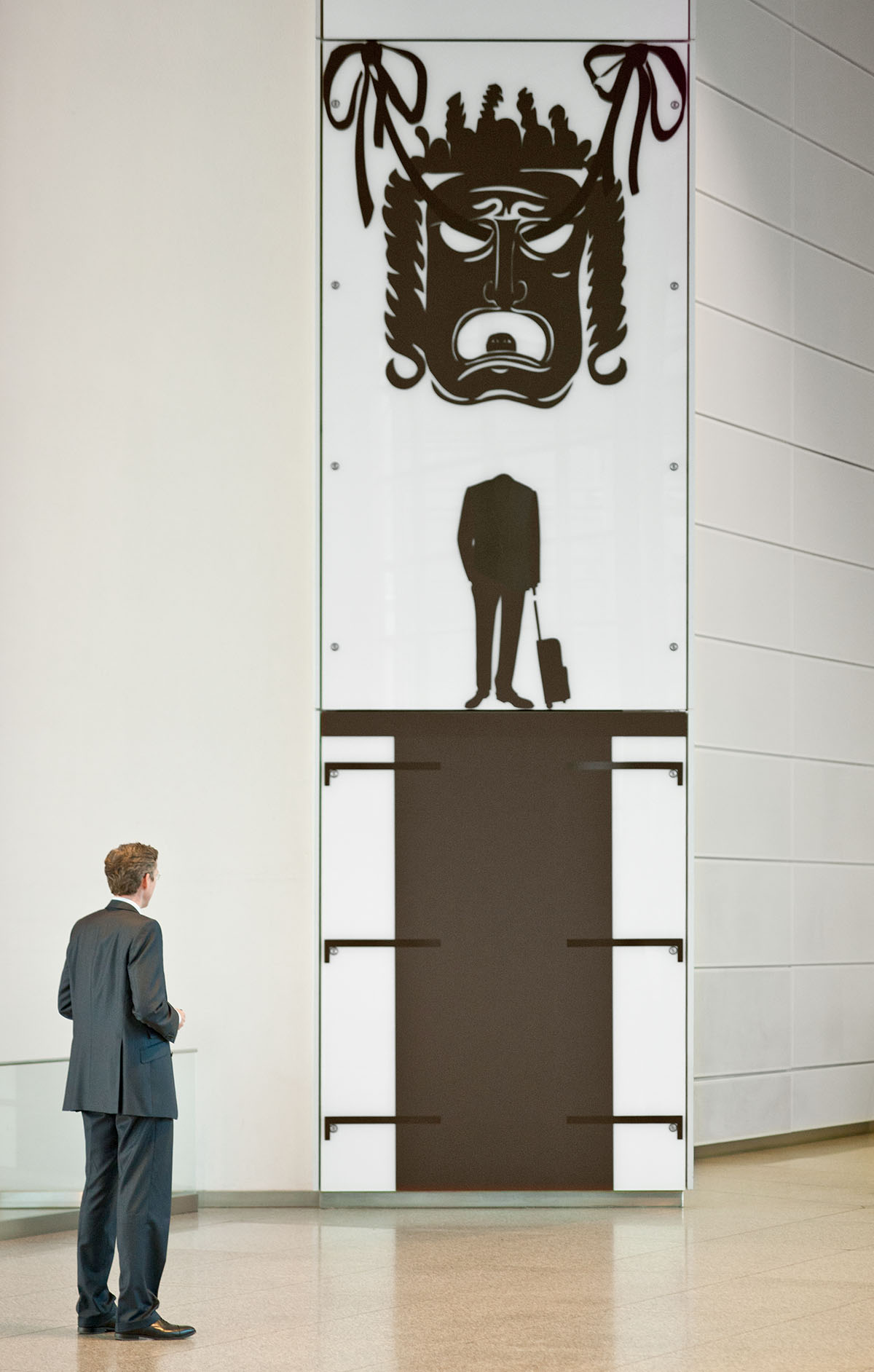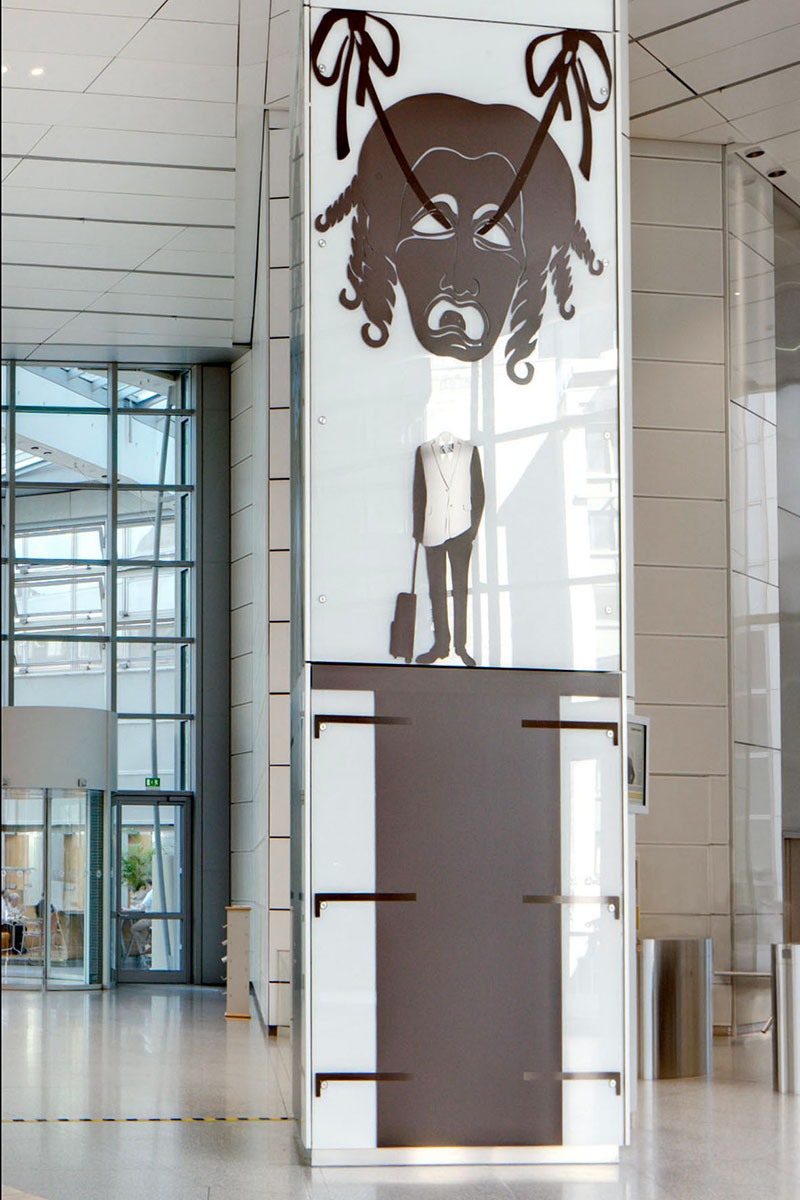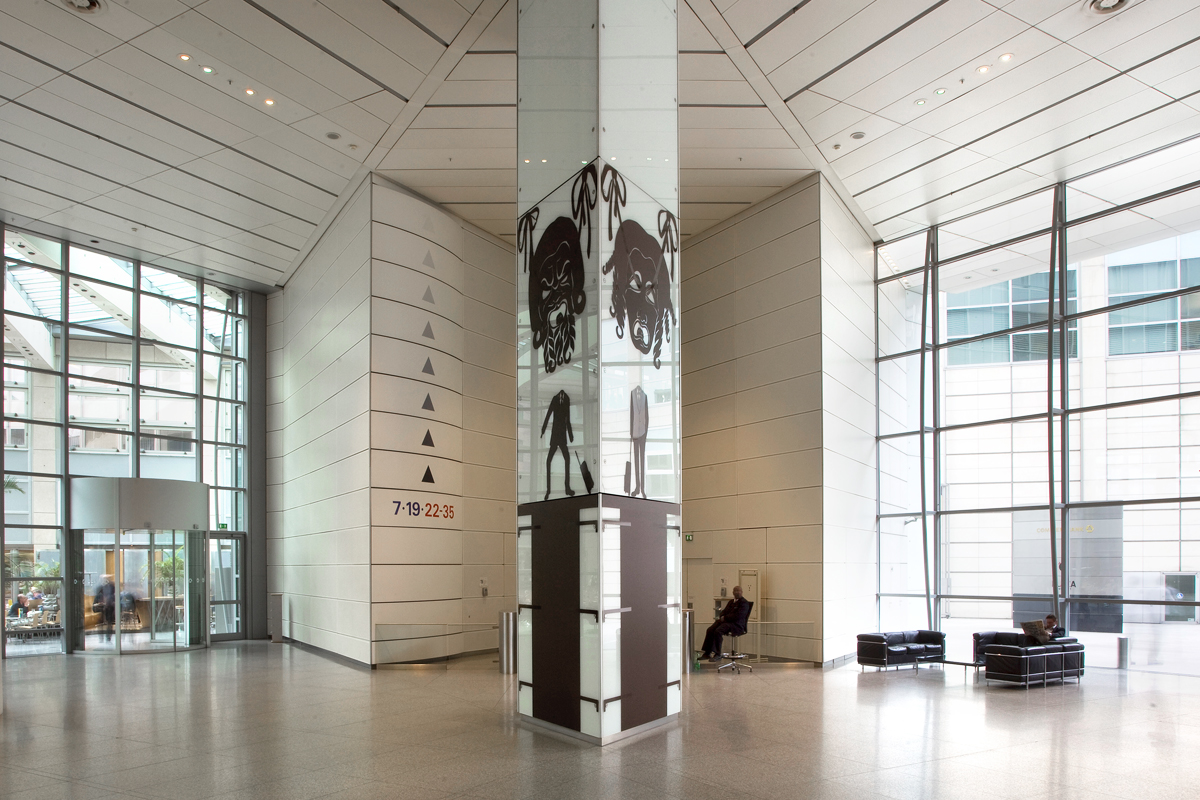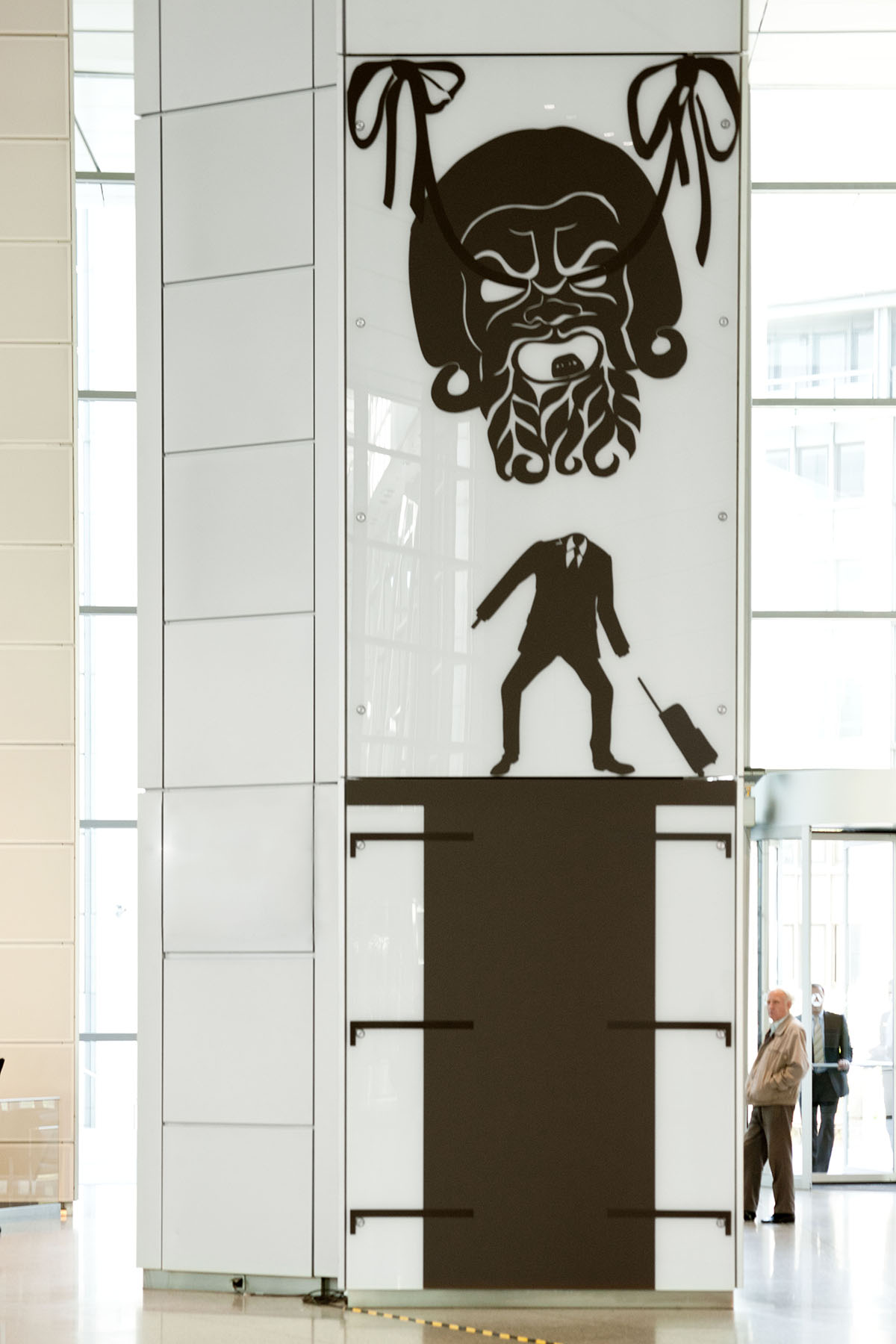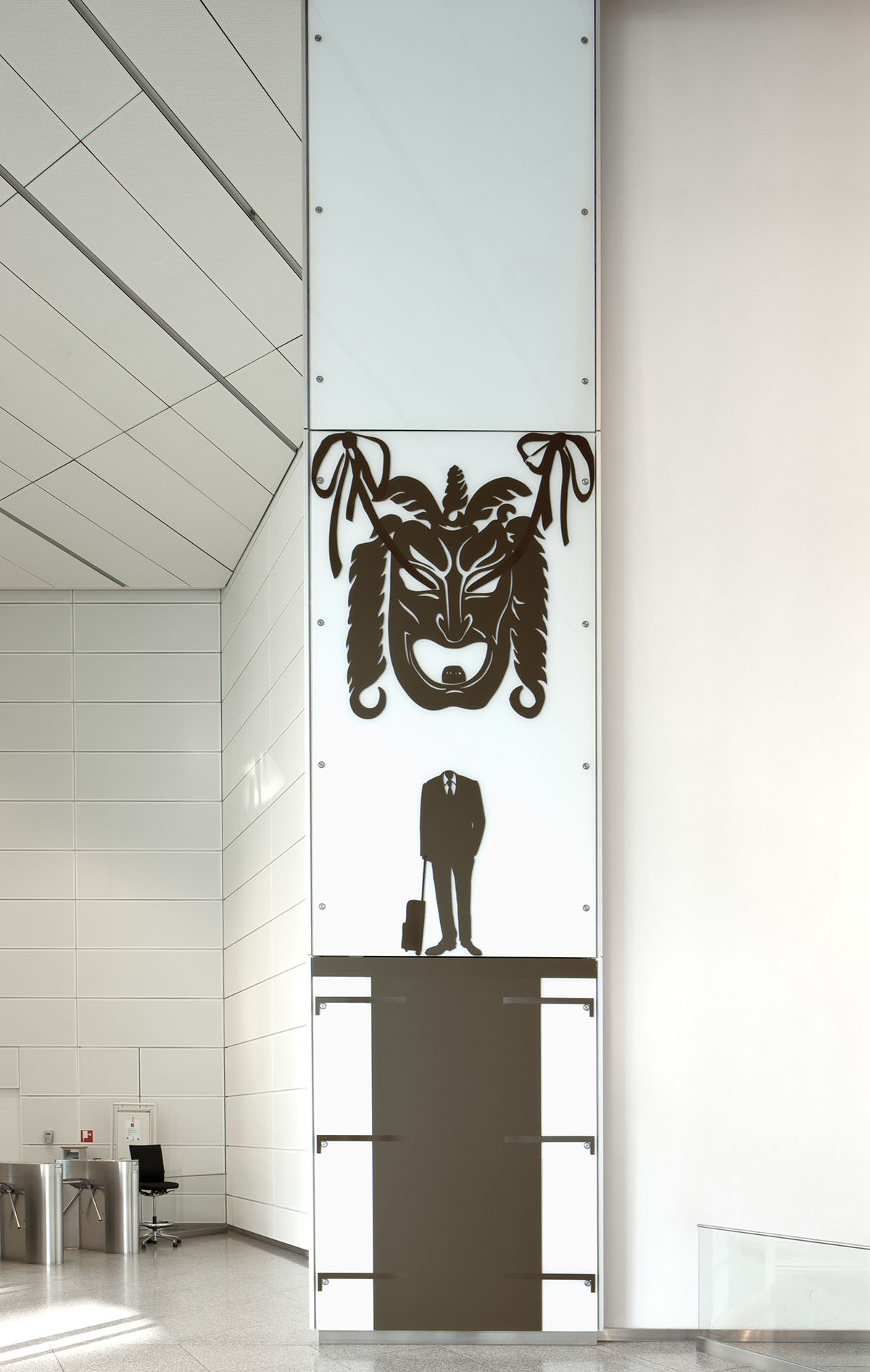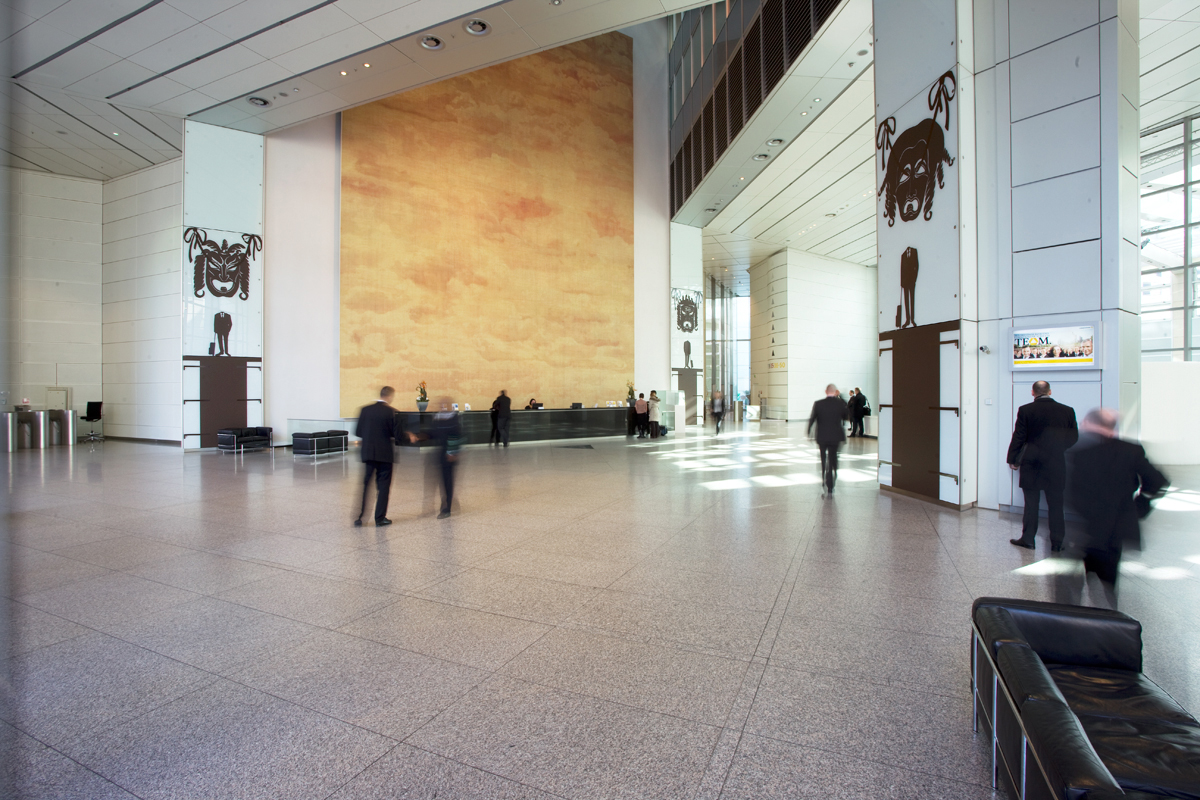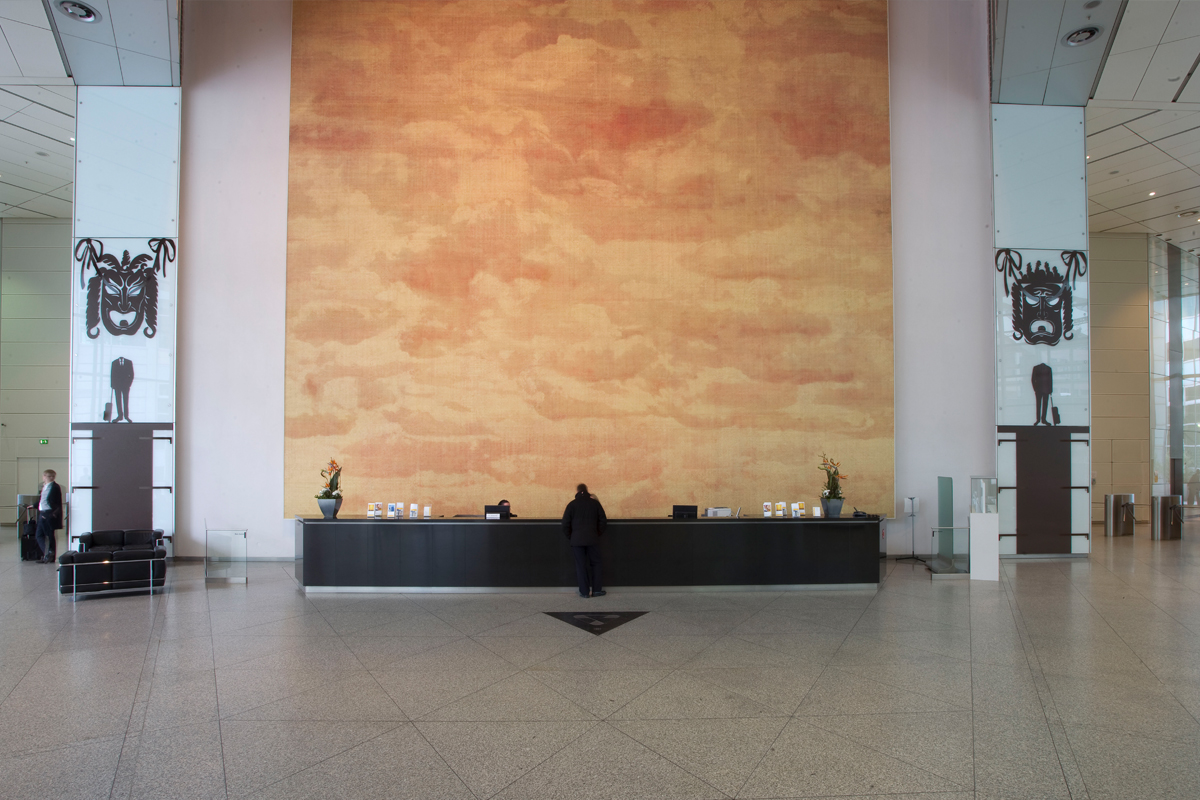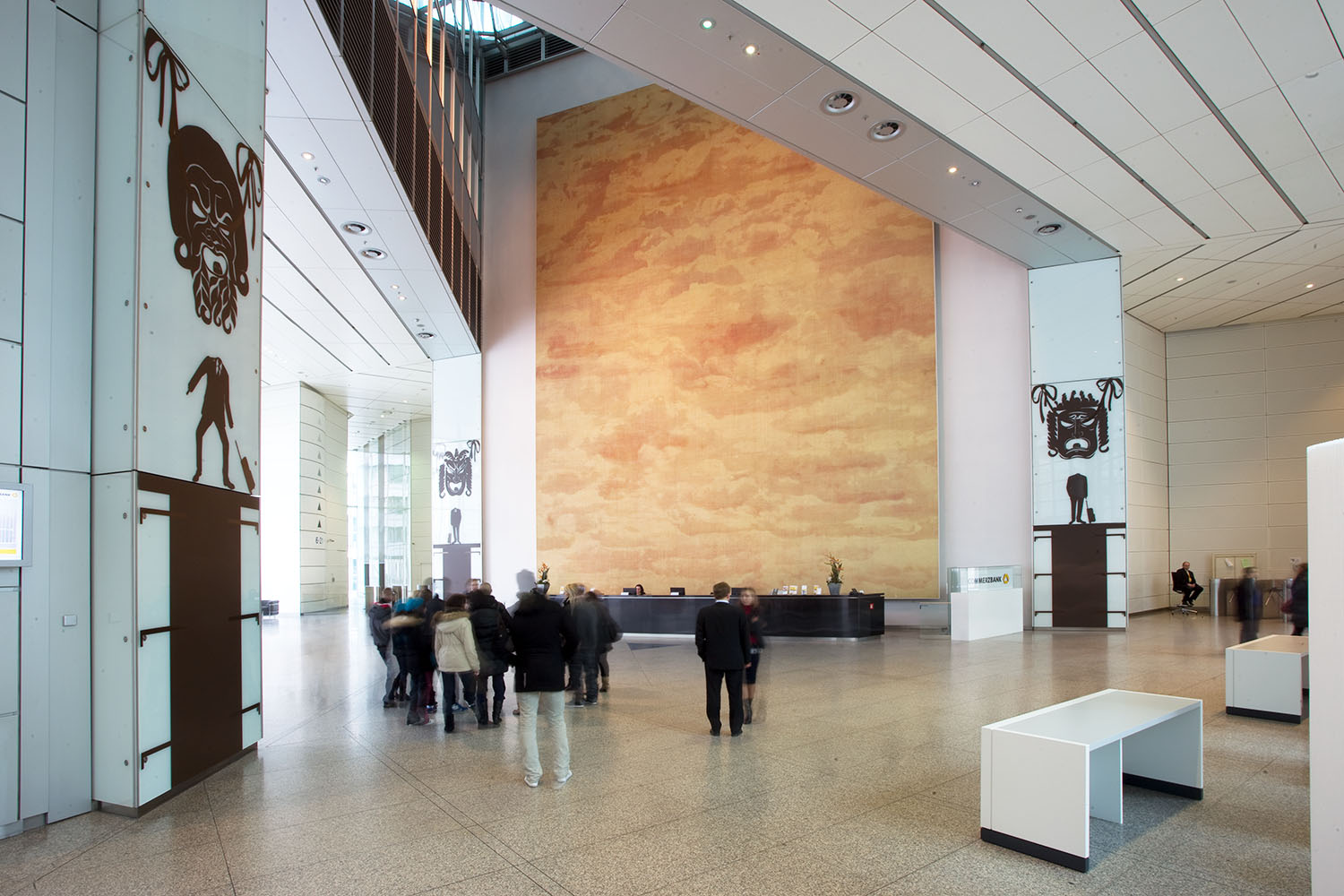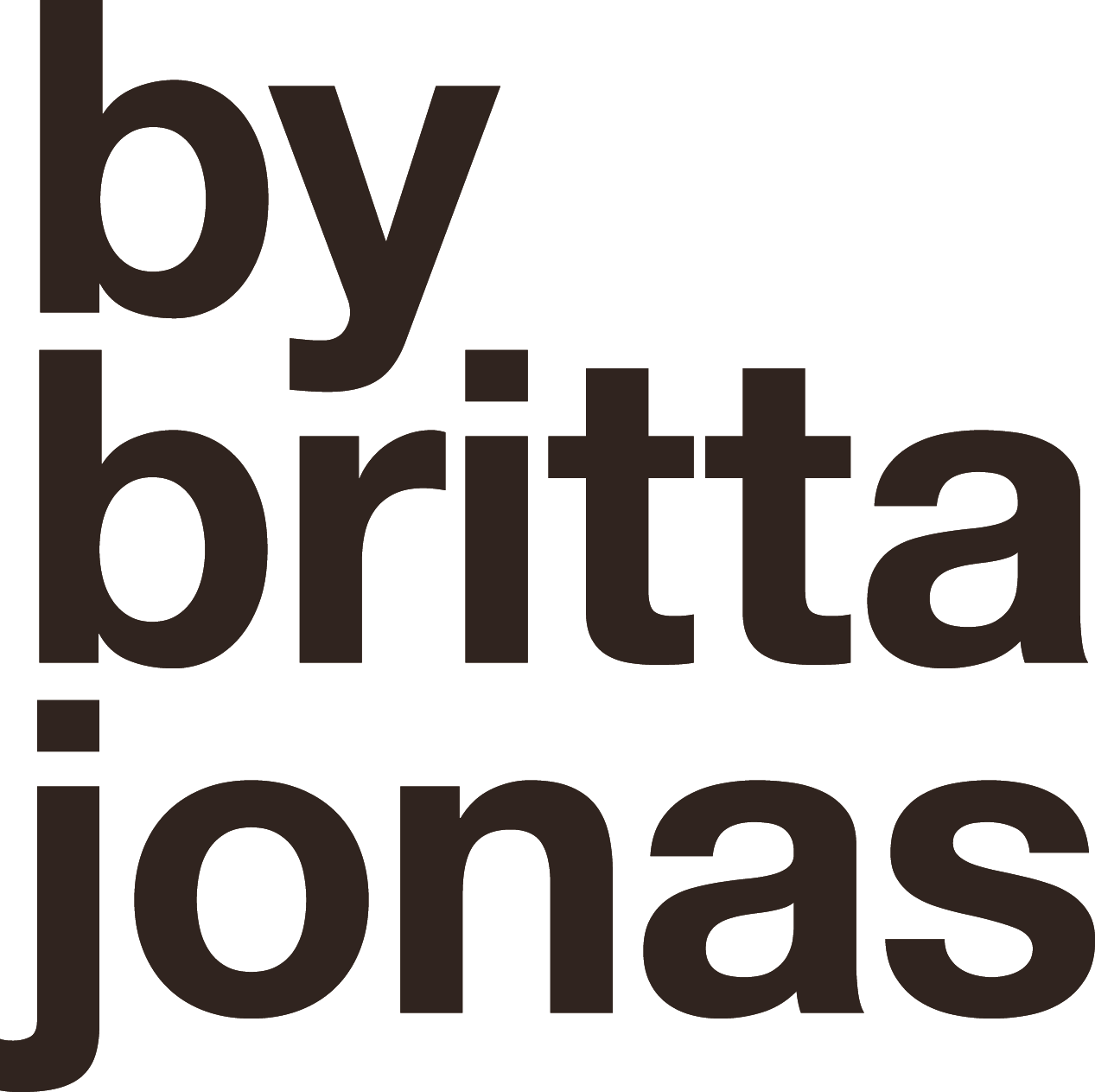
Draperien - Künstlerisches Raumkonzept im Lobbybereich der Commerzbank
Auszüge aus der Brochüre zur Ausstellung „Draperies“, Commerzbank Lobby, Frankfurt:
„Wie steht es mit dem Verhältnis von Bank und Kunst?“
Ein Gespräch zwischen den Künstlerinnen Amalia Barboza, Britta Jonas und der Kuratorin Astrid Kießling-Taşkın
… Britta Jonas: Für mich ist die Lobby als Ort für die Präsentation künstlerischer Arbeiten sehr schwierig. Es gibt keine glatten, weißen Wandflächen, die das Auge beruhigen. Überall erlauben die Glasfassade und -wände Durchblicke. Eine Vielzahl von optischen Eindrücken wirkt immer gleichzeitig, auch ohne Kunst. Man merkt, dass der Raum zu ganz anderen Zwecken konzipiert worden ist und für sich als Architektur stehen und wirken soll. Ein anderer Aspekt ist, dass die Commerzbank- Lobby ein Ort ist, an dem es vorrangig um ganz andere Dinge geht, als um das Betrachten von Kunst. Es laufen, Tag für Tag, sehr viele Menschen durch die Räume, aber nicht unbedingt mit der Muse, sich mit Kunst zu beschäftigen. Sie arbeiten und ihre Gedanken kreisen um andere Themen. Diese Aspekte kann man negativ betrachten oder aber sie als interessant ansehen. Mich hat die Herausforderung gereizt, für einen solchen Ort eine Idee zu entwickeln….
Astrid Kießling-Taşkın: Beim Thema Bank und Kleidung denkt man sofort an den klassischen Business-Anzug in einem Farbspektrum zwischen Grau und Schwarz, egal ob das Männer oder Frauen betrifft. Der schöne Satz „Was ich trage, bin ich“ trifft hier vermutlich nur bedingt zu. Was meint ihr?
Amalia Barboza: Ich habe viele Interviews mit den Mitarbeitern der Bank geführt. Und immer wenn jemand sagte: „Ich sehe am Wochenende ganz ganz anders aus.“, und dieses „ganz“ stark betonte, musste ich tatsächlich daran denken, dass der Anzug wie eine Art Kulisse oder wie ein Kostüm funktioniert, und dass sich dahinter etwas ganz anderes verstecken könnte. Und oft musste ich an Superman denken, oder an irgendeine Comic-Heldenfigur, die unter dem Anzug ein buntes Heldenkleid trägt. – Aber bei vielen Mitarbeitern ist der Anzug oder das Kostüm keine Kulisse, sondern für die jeweilige Person die richtige Form sich zu präsentieren. Man könnte fast sagen, dass der Anzug so wie die griechischen Theatermasken der Antike funktioniert. Diese sollten nichts verstecken oder verwandeln, sondern im Gegenteil, sie sollten ein Gefühl oder einen Charakter besser zum Ausdruck bringen. Ich denke, Britta, dass deine Masken verschiedene Charaktere darstellen.
Britta Jonas: Es gibt vier verschiedene Charaktere: einen alten Mann mit Bart, eine Art König mit einer angedeuteten Krone, einen leicht diabolischen Charakter mit gedrehten Hörnchen an der Stirn und ein weibliches Wesen. Ich hatte die Darstellung griechischer Theatermasken das erste Mal als bildhauerische Steinarbeit im Akropolis Museum in Athen gesehen. Was mir an dieser Art Masken gut gefällt ist, dass sie sich zwischen allen Gefühlen bewegen. Sie sind schrecklich und lustig, traurig und schalkhaft. Man kann sie nicht genau fassen. Auch der weibliche Kopf changiert zwischen maskulin und feminin. Und genau das ist für mich das Interessante: Man kann die Masken nicht einordnen. Die Geschichte und Tradition der griechischen Maske an sich spielt dabei keine Rolle. …
Astrid Kießling-Taşkın: Britta, wie ist deine Vorgehensweise, um zu deinen Motiven zu gelangen?
Britta Jonas: Ich gehe sehr intuitiv vor. Ich frage mich so etwas wie: Was braucht der Raum? In der Commerzbank hatte ich das Bedürfnis, dem Foyer dunkle Flächen zu geben. Ich wollte das helle, kühl anmutende Glas und Metall mit etwas Dunklem konfrontieren. Es ist für mich extrem wichtig, bei der Arbeit alles gedanklich im Unklaren zu lassen. Die Deutung des Ganzen entsteht dann eh’ aus dem Zusammenspiel von Raum, Kunstwerk und der Gedankenwelt des Betrachters. Und am Ende bin ich Betrachter wie jeder andere auch. …
Draperien
Commerzbank Foyer, Frankfurt a. Main
Glänzende und Matte Klebefolie
Realisiert durch die Firma folienstar
Excerpts from the brochure for the exhibition “Draperies”, Commerzbank Lobby, Frankfurt:
“How do bank and art relate to each other?”
A conversation between the artists Amalia Barboza, Britta Jonas and curator Astrid Kießling-Taşkın
… Britta Jonas: For me, the lobby is a very difficult place to present artistic works. There are no smooth, white wall surfaces that calm the eye. Everywhere, the glass façade and glass walls allow for views through. A multitude of visual impressions is always at work simultaneously, even without art. You can sense that the space was designed for completely different purposes and is meant to stand and function as architecture in its own right. Another aspect is that the Commerzbank lobby is a place where the primary concern is not viewing art. Day after day, many people pass through these rooms, but not necessarily with the leisure to engage with art. They are working, and their thoughts revolve around other matters. These aspects can be seen negatively, or they can be considered interesting. I was intrigued by the challenge of developing an idea for such a place….
Astrid Kießling-Taşkın: When it comes to banks and clothing, one immediately thinks of the classic business suit in a color range between gray and black, whether for men or women. The well-known phrase “What I wear is what I am” probably applies only to a limited extent here. What do you think?
Amalia Barboza: I conducted many interviews with the bank’s employees. And whenever someone said, “I look completely different on the weekend”—emphasizing the completely—I actually thought of the suit functioning like a backdrop or costume, hiding something entirely different underneath. And often I thought of Superman, or some kind of comic-book hero figure, who wears a brightly colored hero’s outfit beneath the suit. But for many employees, the suit or costume is not a backdrop at all, but the right form of self-presentation for that person. You could almost say that the suit functions like the Greek theater masks of antiquity. These were not meant to hide or transform anything, but rather, on the contrary, to express a feeling or a character more clearly. I think, Britta, that your masks represent different characters.
Britta Jonas: There are four different characters: an old man with a beard, a kind of king with a suggested crown, a slightly diabolical figure with twisted little horns on the forehead, and a female being. I first encountered the representation of Greek theater masks as stone sculptures in the Acropolis Museum in Athens. What I like about this kind of mask is that it moves among all emotions. They are terrible and funny, sad and mischievous. You cannot pin them down exactly. Even the female head shifts between masculine and feminine. And that is precisely what interests me: you cannot categorize the masks. The history and tradition of the Greek mask as such plays no role here…
Astrid Kießling-Taşkın: Britta, what is your approach to arriving at your motifs?
Britta Jonas: I proceed very intuitively. I ask myself something like: What does the space need? In the Commerzbank, I felt the need to give the foyer dark surfaces. I wanted to confront the light, cool impression of glass and metal with something darker. It is extremely important to me to leave everything mentally unresolved during the process of working. The interpretation of the whole inevitably arises from the interplay of space, artwork, and the mental world of the viewer. And in the end, I am a viewer like everyone else as well…
Draperies
Commerzbank Foyer, Frankfurt am Main
Glossy and matte adhesive film
Executed by the company folienstar

